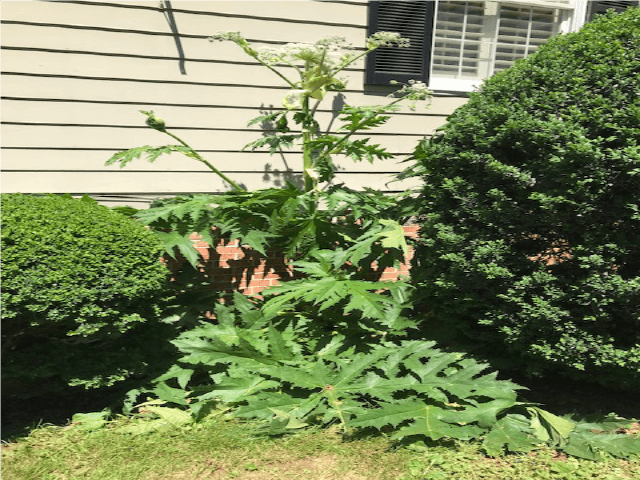Listed as a Tier 1 Noxious Weed on the Virginia Department of Agriculture and Consumer Services (VDACS) Noxious Weed List and classified as an early detection invasive plant by the Virginia Department of Conservation and Recreation, giant hogweed is not yet established in Virginia and the goal is to eradicate it if found. You can help identify this invasive species by reporting any plants that you suspect are giant hogweed to your local Virginia Cooperative Extension office, or by filing an online report on the Virginia Invasive Species website.
Though giant hogweed looks similar to angelica, Queen Anne’s lace, and cow parsnip, one feature that distinguishes it from these other plants is its massive size. Plants can grow over 15 feet in height, with leaves up to five feet across and flower clusters up to two feet across with 50-100 umbels.
If you do run across what you think may be a giant hogweed, please do not attempt to remove the plant yourself. Simply take a photo of the leaf, stem, and flower – and allow agency staff to identify the species. The Virginia Cooperative Extension has released a guide for identifying and dealing with giant hogweed. If you get sap on your skin, you should immediately wash with soap and cold water and avoid sunlight. If a reaction begins, seek immediate medical attention. If you get sap in your eyes, immediately rinse them with cold water, wear sunglasses to limit sun exposure, and seek immediate medical attention.*
Read more about giant hogweed on the USDA National Invasive Species Information Center website.
*the sap is phototoxic – it must be activated by UV light to cause serious and long lasting burns.
photo courtesy of Virginia Tech

